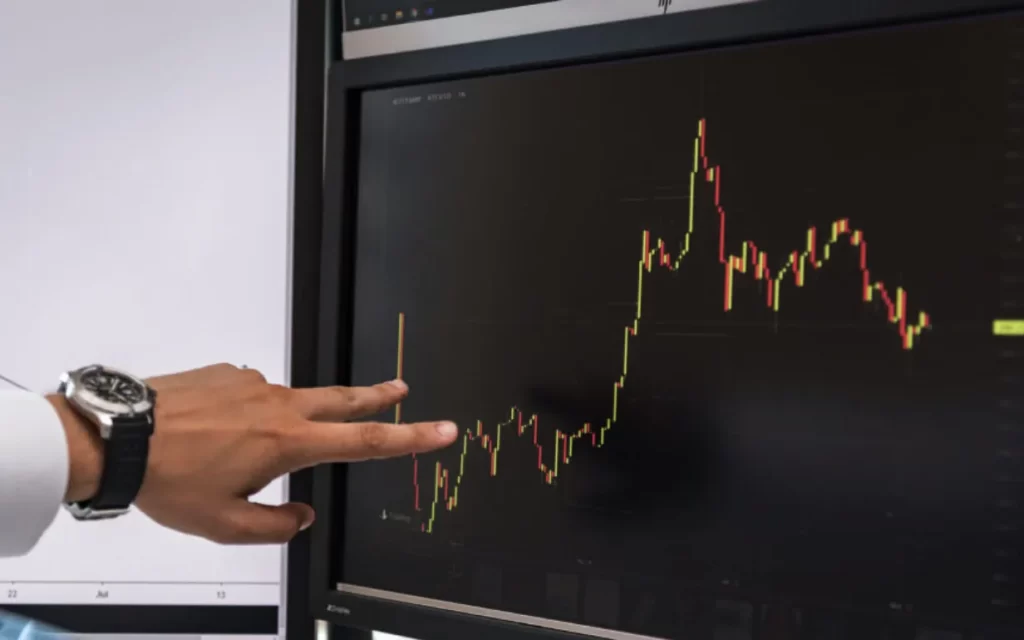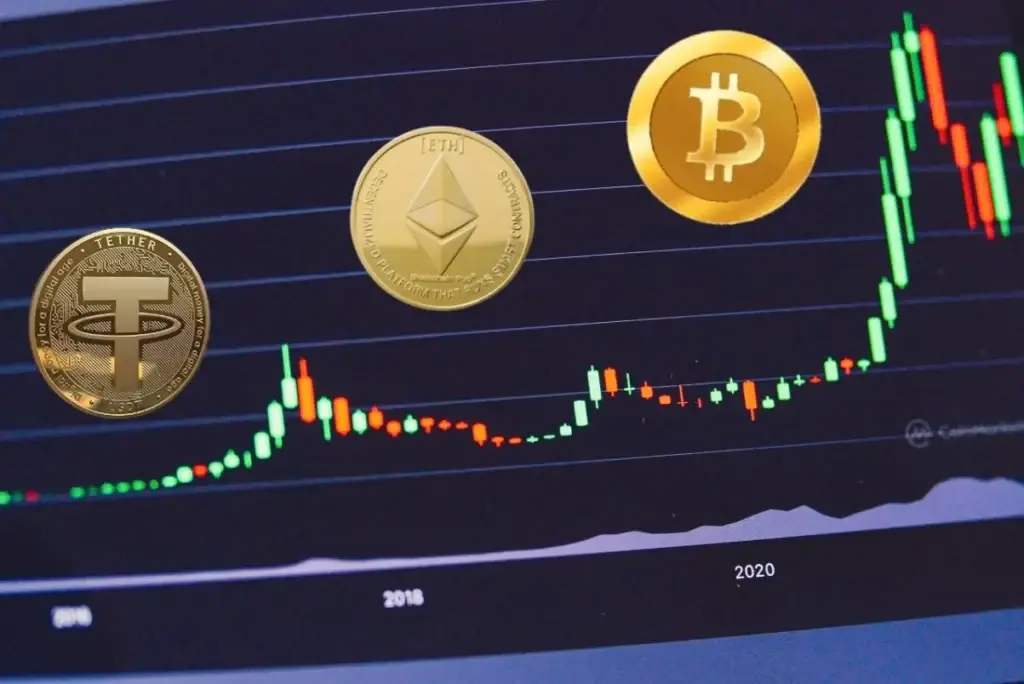The Bitcoin digital asset has moved from the category of highly speculative instruments to the category of global investment hubs. The Bitcoin price forecast is of interest not only to crypto enthusiasts, but also to international corporations, family offices and government agencies. The growth of capitalization by $ 1.6 trillion in 14 years and the latest wave of institutional entry have marked a new stage – the phase of maturity and transformation. The impact of halving factors, regulation, mining capacity and macroeconomic indicators has a direct impact on the asset rate in both the short-term and strategic horizons.
Bitcoin Price Forecast: Short-Term Momentum
The short-term Bitcoin price forecast depends on a combination of market liquidity, macroeconomic decisions and institutional investor positions. The support level has shifted above $ 90,000. The formation has consolidated above $ 91,000, and the upward momentum confirms the strength of the buyer. Hedge funds are actively distributing capital through spot ETFs, which is increasing buying pressure.
The market is showing stability above $100,000, responding to stable macroeconomic signals and the influx of liquidity into the ETF segment. The Bitcoin price forecast for tomorrow fluctuates in the range of $102,500–$106,000. Consolidation above $107,000 will require momentum from the futures volume or a sudden macroeconomic correction.
Medium-term outlook: until 2025
 The 2024 halving ended with the reward being reduced to 3.125 BTC, but at the current stage it no longer has a key influence. Market dynamics have shifted towards institutional accumulation, ETF inflows and the general trend towards asset digitalization. The Bitcoin price forecast until the end of 2025 is based on aggregate demand factors, and not on the emission limitation. The medium-term trend is strengthening if the growth of interest from pension funds and public companies continues.
The 2024 halving ended with the reward being reduced to 3.125 BTC, but at the current stage it no longer has a key influence. Market dynamics have shifted towards institutional accumulation, ETF inflows and the general trend towards asset digitalization. The Bitcoin price forecast until the end of 2025 is based on aggregate demand factors, and not on the emission limitation. The medium-term trend is strengthening if the growth of interest from pension funds and public companies continues.
The base case scenario assumes growth to $140,000 with stable capital inflow dynamics and the current interest rate regime. The upper limit of the optimistic forecast has moved to $190,000, provided that ETF products expand in the Asian market and the role of digital assets in institutional portfolios increases. The rate is based on the estimated imbalance between supply and demand (expected volume of new BTC: less than 170,000 coins per year).
Long-term trajectory: Bitcoin price forecast to 2030
The Bitcoin price forecast for 2030 integrates the factor of digital asset penetration into pension and trust funds. BlackRock, Fidelity, Vanguard and other giants are accumulating BTC for long-term holding. The scenario with mass ETF implementation and global decentralization of settlements forms a price corridor of $330,000–$480,000. The assessment takes into account the trend of Bitcoin consolidation in strategic funds and the growth of its share in transnational settlements.
Scenario analysis:
- Base case: $320,000 with Bitcoin dominating as digital gold.
- Pessimistic: $180,000 — with the introduction of direct bans in the largest jurisdictions or a sharp increase in competition from CBDCs.
- Optimistic: $480,000 — with a mass departure from the fiat model in developing countries.
The assessment parameters take into account the number of active wallets (more than 500 million by 2030), the average volume of daily transactions ($80 billion), as well as a decrease in the share of speculative transactions.
20+ Year Horizon: Bitcoin Price Forecast to 2050
The Bitcoin price forecast to 2050 goes beyond the standard asset valuation. It is becoming a basic element of the global settlement circuit. The analysis is formed against the backdrop of the transition to decentralized settlements between countries, the simplification of cross-border transfers, as well as the growth of mistrust in traditional currencies.
The current capital growth model using CAGR (compound annual growth rate) assumes:
- CAGR 13% → $1.5 million;
- CAGR 17% → $4.3 million;
- CAGR 21% → $9.6 million.
Calculations reflect the impact of accelerated digitalization and the introduction of BTC into the calculation baskets of macroeconomic blocks.
Key barriers and limitations
Global regulation remains the main uncertainty. The attitude of the SEC, the Central Bank of China, the EU and the G20 countries towards the status of BTC directly affects confidence in the asset. Tightening KYC/AML regulations may restrain the influx of retail investors. The cost of mining after the halving rose to $50,000 per BTC (data for mid-2025). Resistance to price drops below this limit has decreased. At the same time, the expansion of the use of renewable sources and an increase in the hash rate to 900 EH / s strengthen the infrastructure.
The role of expert opinions: strategies of major investors
Expert opinions on Bitcoin price forecasts vary. MicroStrategy focuses on accumulation — more than 214,000 BTC on its balance sheet. Ark Invest sees potential in $1 million by 2030. JPMorgan predicts consolidation around $150,000 if the current economic course is maintained. Some analysts use the Stock-to-Flow (S2F) model, while others apply a modified Logarithmic Regression. Both methods point to a possible $500,000–$1 million if the deficit emission is maintained.
Investment aspect: arguments in favour of investment
Whether it is worth investing in Bitcoin is a question influenced by the level of risk, investment horizon and capital structure. With a diversified portfolio (up to 5–10% in BTC), the asset provides a hedge against inflation and geopolitical shocks. Investments in Bitcoin remain volatile. However, with a competent entry and holding strategy over 5–10 years, BTC demonstrates an average annual growth of over 40%. Calculations show that a $10,000 investment in 2015 would have grown to $670,000 by 2025.
Factors affecting the long-term Bitcoin price forecast:
- The volume of issuance and periodic halvings (a 50% reduction every 4 years).
- The share of BTC in global investment portfolios.
- The legal status of the asset in key jurisdictions.
- The scale of mining capacity and the cost of mining.
- The level of institutional interest.
- The regularity of crises in the fiat system.
- The level of BTC penetration in the retail economy.
- The volume of trading through derivatives and ETFs.
- The availability of storage facilities and decentralised wallets.
- The impact of geopolitical events on fiat assets.
Conclusion
 Bitcoin price forecasting is based on real processes, including halving, institutional interest, technological development, and global regulation. The analysis shows that the token is demonstrating exponential rather than cyclical growth. The long-term forecast takes into account not only financial parameters but also the transformation in the architecture of the global economy. Network stability, supply shortages, integration into institutional instruments, and growing confidence continue to form a powerful upward trend.
Bitcoin price forecasting is based on real processes, including halving, institutional interest, technological development, and global regulation. The analysis shows that the token is demonstrating exponential rather than cyclical growth. The long-term forecast takes into account not only financial parameters but also the transformation in the architecture of the global economy. Network stability, supply shortages, integration into institutional instruments, and growing confidence continue to form a powerful upward trend.



 Bank transfers, clearing, settlement, and insurance are processes that can be automated. Blockchain technologies in the financial sector allow transactions to be verified instantly, eliminate the need for intermediaries, and reduce settlement time. The average time for an interbank transfer is reduced from two days to three minutes. Settlement between countries is possible without a single currency and without dependence on exchange rates.
Bank transfers, clearing, settlement, and insurance are processes that can be automated. Blockchain technologies in the financial sector allow transactions to be verified instantly, eliminate the need for intermediaries, and reduce settlement time. The average time for an interbank transfer is reduced from two days to three minutes. Settlement between countries is possible without a single currency and without dependence on exchange rates. Digital progress is irreversible. The areas of application for blockchain technology continue to expand, replacing obsolete mechanisms. At the same time, the main emphasis is shifting from the exotic to the practical. Transparency, security, speed, and automation are not slogans, but functional characteristics. Industries where the price of mistakes is measured in human lives, billions of dollars, and reputation are choosing decentralisation as a guarantee of accuracy. Blockchain is moving from a concept to a tool, from an experiment to a standard. The future of distributed systems is already here. It has already been integrated into the registry, included in the contract, and fixed in the block.
Digital progress is irreversible. The areas of application for blockchain technology continue to expand, replacing obsolete mechanisms. At the same time, the main emphasis is shifting from the exotic to the practical. Transparency, security, speed, and automation are not slogans, but functional characteristics. Industries where the price of mistakes is measured in human lives, billions of dollars, and reputation are choosing decentralisation as a guarantee of accuracy. Blockchain is moving from a concept to a tool, from an experiment to a standard. The future of distributed systems is already here. It has already been integrated into the registry, included in the contract, and fixed in the block.
 Ethereum has established itself among both technology enthusiasts and high-frequency traders. Its high performance, demand for the token in DeFi, and low decline in times of high volatility have made it the second most popular trading asset.
Ethereum has established itself among both technology enthusiasts and high-frequency traders. Its high performance, demand for the token in DeFi, and low decline in times of high volatility have made it the second most popular trading asset. Focusing on the most traded cryptocurrencies increases the chances of a trading strategy being effective. An asset with high trading volume, low spread, and stable volatility allows you to manage risks, reduce commission costs, and react quickly to market impulses. Each instrument on the list has specific trading characteristics: from algorithmic speed to legal transparency, from the meme effect to banking depth. Success in trading does not begin with the trend, but with the precise choice of a liquid asset.
Focusing on the most traded cryptocurrencies increases the chances of a trading strategy being effective. An asset with high trading volume, low spread, and stable volatility allows you to manage risks, reduce commission costs, and react quickly to market impulses. Each instrument on the list has specific trading characteristics: from algorithmic speed to legal transparency, from the meme effect to banking depth. Success in trading does not begin with the trend, but with the precise choice of a liquid asset.
 A detailed analysis of specific services allows you to select the most promising projects that provide stable income and quick withdrawal of funds. Let us consider the most popular solutions:
A detailed analysis of specific services allows you to select the most promising projects that provide stable income and quick withdrawal of funds. Let us consider the most popular solutions: Competent use of cryptocurrency taps will help create an additional source of income in 2025. The use of complex strategies allows minimising operational risks, optimising withdrawal conditions and increasing investment efficiency. The investment strategy requires constant monitoring of market trends, adjustment of multiplier parameters and timely analysis of bonus systems.
Competent use of cryptocurrency taps will help create an additional source of income in 2025. The use of complex strategies allows minimising operational risks, optimising withdrawal conditions and increasing investment efficiency. The investment strategy requires constant monitoring of market trends, adjustment of multiplier parameters and timely analysis of bonus systems.
 There are several options for locking cryptocurrencies, each with its characteristics and suitable for different types of investors. The way to make money with cryptocurrency staking depends on the strategy and platform chosen.
There are several options for locking cryptocurrencies, each with its characteristics and suitable for different types of investors. The way to make money with cryptocurrency staking depends on the strategy and platform chosen. Making money with cryptocurrency staking isn’t just about choosing a coin and a platform to freeze your funds. This is a strategy that requires analyzing many factors: from the token’s profitability and liquidity to network and technology stability. Every investor should carefully approach the choice of cryptocurrency to stake in order to reduce risks and make a profit.
Making money with cryptocurrency staking isn’t just about choosing a coin and a platform to freeze your funds. This is a strategy that requires analyzing many factors: from the token’s profitability and liquidity to network and technology stability. Every investor should carefully approach the choice of cryptocurrency to stake in order to reduce risks and make a profit.
 Today’s market offers many options for asset allocation. The choice depends on the level of trust, commission and ease of use.
Today’s market offers many options for asset allocation. The choice depends on the level of trust, commission and ease of use. Staking is a tool that opens the door to passive income in the world of cryptocurrencies. This is an opportunity to make coins work for you and at the same time support the functioning of blockchain networks. In 2024, staking will continue to gain popularity due to its simplicity, accessibility and environmental friendliness. The key is to understand the risks, choose reliable platforms and do not invest more than you can afford to lose.
Staking is a tool that opens the door to passive income in the world of cryptocurrencies. This is an opportunity to make coins work for you and at the same time support the functioning of blockchain networks. In 2024, staking will continue to gain popularity due to its simplicity, accessibility and environmental friendliness. The key is to understand the risks, choose reliable platforms and do not invest more than you can afford to lose.
 Making money with cryptocurrency in 2024 through staking is suitable for those who want a stable income without constantly trading. Unlike cryptocurrency mining, the process does not require expensive equipment or large energy costs. Investors receive a reward for supporting the blockchain network.
Making money with cryptocurrency in 2024 through staking is suitable for those who want a stable income without constantly trading. Unlike cryptocurrency mining, the process does not require expensive equipment or large energy costs. Investors receive a reward for supporting the blockchain network. Ways to make money with cryptocurrency in 2024 offer many methods for earning active and passive income. Trading, staking, lending, and holding allow you to choose the right strategy depending on your goals and experience. Using these tools wisely will help you achieve your financial goals and adapt to the changing market.
Ways to make money with cryptocurrency in 2024 offer many methods for earning active and passive income. Trading, staking, lending, and holding allow you to choose the right strategy depending on your goals and experience. Using these tools wisely will help you achieve your financial goals and adapt to the changing market.
 Investing is a strategy that involves holding a digital currency for the long term with the goal of benefiting from its growth in value. In 2024/25, this approach is becoming increasingly attractive for the following reasons:
Investing is a strategy that involves holding a digital currency for the long term with the goal of benefiting from its growth in value. In 2024/25, this approach is becoming increasingly attractive for the following reasons: How to make money with Bitcoin in 2024/25? From mining to trading and long-term investments, there’s a suitable way for everyone to increase their profits. It’s important to choose strategies based on concrete data and proven methods to minimize risks and maximize profits. Research the market, use a variety of approaches, and act wisely to successfully make money with Bitcoin this year.
How to make money with Bitcoin in 2024/25? From mining to trading and long-term investments, there’s a suitable way for everyone to increase their profits. It’s important to choose strategies based on concrete data and proven methods to minimize risks and maximize profits. Research the market, use a variety of approaches, and act wisely to successfully make money with Bitcoin this year.
 Long-term investment strategies staking and holding are gaining popularity among crypto investors. If you want to earn money steadily, but not be too involved in the process, these methods of earning money on crypto are ideal.
Long-term investment strategies staking and holding are gaining popularity among crypto investors. If you want to earn money steadily, but not be too involved in the process, these methods of earning money on crypto are ideal. With tools like cloud mining, trading, staking, and holding, there is every chance not only to stay afloat, but also to benefit from growing trends. But do not forget that every way to earn money on crypto is associated with risks. Distribute investments correctly, choose reliable platforms, and always follow market trends.
With tools like cloud mining, trading, staking, and holding, there is every chance not only to stay afloat, but also to benefit from growing trends. But do not forget that every way to earn money on crypto is associated with risks. Distribute investments correctly, choose reliable platforms, and always follow market trends.
 Many people dream of an income that does not require an active job. This is a very real possibility for those willing to invest in gambling. It is a process in which owners of electronic funds lock them in the network to ensure their security and stability, and in return receive a reward. Simply put: it is an analogue of a bank deposit, only in the world of cryptocurrencies.
Many people dream of an income that does not require an active job. This is a very real possibility for those willing to invest in gambling. It is a process in which owners of electronic funds lock them in the network to ensure their security and stability, and in return receive a reward. Simply put: it is an analogue of a bank deposit, only in the world of cryptocurrencies. The cryptocurrency market is full of opportunities for those who are willing to learn, develop and take risks. Both trading and mining can bring significant income, but losses are no less possible. Is it possible to make money with cryptocurrency? The answer is yes, but with reservations. The main thing is to approach the process with an understanding of the risks and a willingness to change.
The cryptocurrency market is full of opportunities for those who are willing to learn, develop and take risks. Both trading and mining can bring significant income, but losses are no less possible. Is it possible to make money with cryptocurrency? The answer is yes, but with reservations. The main thing is to approach the process with an understanding of the risks and a willingness to change.
 Almost every article promises an answer to this question. In reality, quick money is often associated with high risks. Platforms that offer guaranteed interest often turn out to be Ponzi schemes that simply disappear with users’ money.
Almost every article promises an answer to this question. In reality, quick money is often associated with high risks. Platforms that offer guaranteed interest often turn out to be Ponzi schemes that simply disappear with users’ money. How to make money with cryptocurrencies in 2024 is a question that requires careful study and an understanding of the opportunities offered by the market. The development of technology and the interest of the state and the economy make cryptocurrencies an attractive investment. Any way of making money requires analysis and informed decisions. You should start small, with low-risk methods such as betting or participating in trading in the air, and then gradually move on to more complex strategies.
How to make money with cryptocurrencies in 2024 is a question that requires careful study and an understanding of the opportunities offered by the market. The development of technology and the interest of the state and the economy make cryptocurrencies an attractive investment. Any way of making money requires analysis and informed decisions. You should start small, with low-risk methods such as betting or participating in trading in the air, and then gradually move on to more complex strategies.





